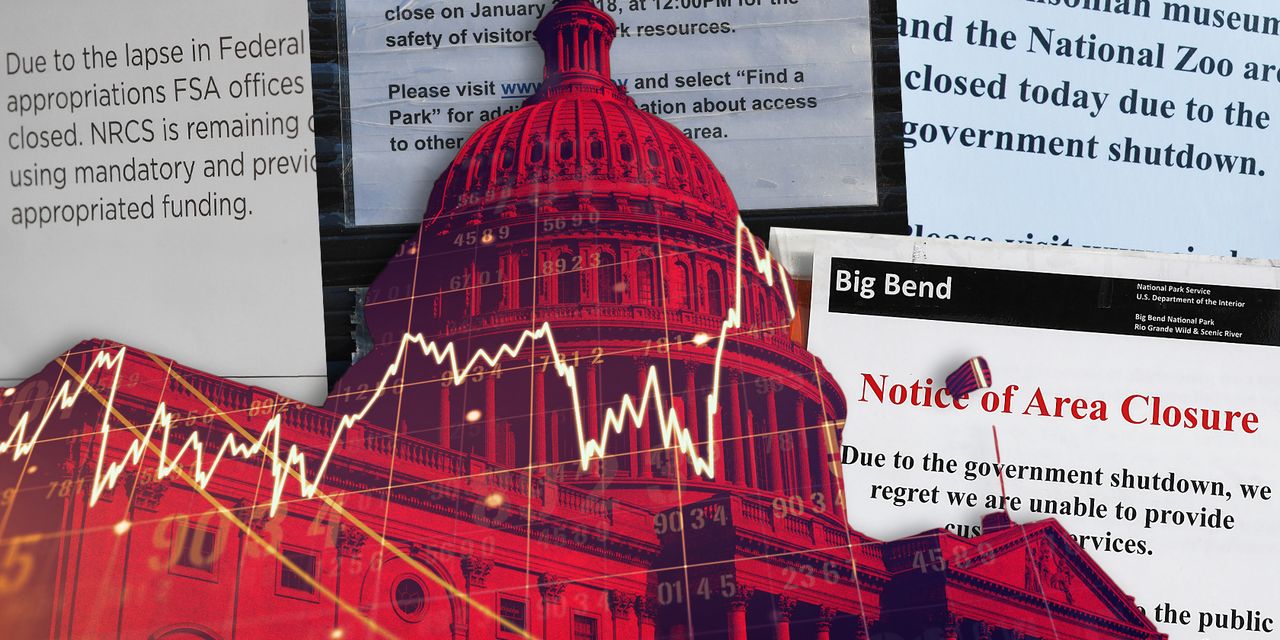U.S. lawmakers are due to get back to work Tuesday on Capitol Hill, and there are growing expectations that one fruit of their labors will be a partial government shutdown.
“My guess is that we will have a lot of screaming and shouting, and we’ll end up shutting down the government, and a lot of people will be inconvenienced or hurt as a result of doing that, but we’ll do it,” said Republican Sen. Mitt Romney of Utah in an interview with a TV station in his home state.
“And by the way, we’ll shut down government, and then we’ll open it. It’s not like that means that we win. No, no. We just shut it down to show that we’re fighting and making noise.”
Investors should view the shutdown as largely noise, according to a number of analysts in Washington, D.C., who track lawmakers’ moves for Wall Street.
“The stakes here are significantly lower than they were back in June, when we were facing default,” said Ed Mills, Washington policy analyst for Raymond James, referring to lawmakers’ efforts to reach a deal on raising the U.S. debt ceiling in order to avoid a market-shaking default.
“For the most part, this is a 1 or 2 on a scale of 1 to 10 in terms of concern,” Mills told MarketWatch, adding that a U.S. default, on the other hand, would have registered as a 10 on that scale.
There have been six government shutdowns since 1978 that lasted five days or more, and the S&P 500 stock index
SPX
gained in the four most recent shutdowns. Brian Gardner, chief Washington policy strategist at Stifel, emphasized that history in a note to clients.
“Headlines regarding a potential budget impasse will grow and there could be a whiff of panic in the air, but investors should take all of this in stride. Markets tend to ignore the impact of a government shutdown,” Gardner wrote, as he offered the chart shown below.
From MarketWatch’s archives (September 2021): Here’s how the stock market has performed in past government shutdowns
And from January 2019: The latest government shutdown is ending, after becoming the longest on record — by a wide margin
How government shutdowns can hurt
Stifel’s Gardner said that while past shutdowns suggest that investors should not panic, there still is some damage.
“There will be extensive media coverage of closed entrances at national parks and other government facilities. Government salaries will not be paid on time which is, certainly, a hardship for some families,” he wrote. At the same time, he emphasized that “much of the country will operate as usual,” including the military
ITA
and air traffic controllers — and missed paychecks will come through once the shutdown ends.
From MarketWatch’s archives (January 2019): How furloughed federal workers can rebuild their finances after the shutdown
“From a market perspective, the biggest concern relating to a government shutdown is that it could delay official government data reports at a pivotal time for the Federal Reserve,” said BTIG’s Issac Boltansky and Isabel Bandoroff in a note.
Related: Jackson Hole recap: Fed rate hikes likely on hold for ‘several meetings’
The BTIG analysts said they expect a shutdown will occur but it should be a “nonevent for markets” overall, because it “would have no impact on debt payments and any missed activity would be settled on the other side of reopening.”
There could be a greater-than-anticipated impact on stocks
DJIA
COMP
if the shutdown lasts for a longer time than expected, and if the deal to end the shutdown features unexpectedly large cuts to spending along with significant repeals of Democrats’ Inflation Reduction Act, according to Mills, the Raymond James analyst.
“The most likely scenario is that it’s days, not weeks,” he said, regarding the length of any shutdown. He also noted it could hit consumer confidence and disrupt the initial-public-offering process for some companies.
What’s likely to happen on Capitol Hill
Only one chamber of Congress is returning to Washington on Tuesday, the day following Labor Day, after an August recess — the Senate. The House of Representatives is slated to resume its work on Capitol Hill a week later, on Sept. 12.
Ahead of their returns, the Biden White House’s budget office has pushed for passage of a short-term funding measure to avoid a partial federal government shutdown on Oct. 1, when the government’s 2024 fiscal year starts.
Such a measure is known as a continuing resolution, or CR, and they’re often used as the House and Senate work to agree on a dozen appropriations bills that would fund government operations for a full fiscal year.
The debt-ceiling deal negotiated between House Speaker Kevin McCarthy and President Joe Biden set spending levels over the next two years, keeping nonmilitary spending for 2024 the same as 2023 levels. But House Republicans have adopted spending targets for the coming fiscal year at levels below the McCarthy-Biden agreement.
McCarthy has raised the idea of a short-term funding bill with his fellow Republicans.
“The thing that Kevin McCarthy is trying to tell his caucus is that we probably need to have a short-term CR, so that the House can finish its work on appropriations bills and establish the best negotiating position,” Mills said.
The House Freedom Caucus, a hardline GOP group known for causing headaches for the chamber’s leaders, has voiced concerns. It said in an Aug. 21 statement that its members want to rein in outlays and will oppose any spending measure that doesn’t include a House-passed bill focused on security at the U.S. southern border. In addition, the group said any spending measure must address the “unprecedented weaponization” of the Justice Department and the FBI, as well as end “woke policies in the Pentagon.”
The most likely path forward is the GOP-run House passes a short-term funding measure that incorporates House Freedom Caucus goals, and then there’s a showdown with the Democratic-controlled Senate over those policy riders, with a short-lived shutdown potentially taking place, Mills said.
The Raymond James analyst said the most likely deal is a budget that’s in line with what was negotiated as part of the debt-limit deal. He also expects supplemental measures that provide relief for areas hit by Hurricane Idalia and the Maui wildfires, as well as some funding for Ukraine as it continues its fight against Russia’s invasion.
“For investors, they have seen McCarthy go up to the brink, go through a tough situation and be able to pull a rabbit out of it,” Mills said, referring to his January battle to become House speaker and the spring’s debt-limit talks. And they’ve “gone through government shutdowns in the past, mostly with very minimal market reaction,” he added.
Read the full article here











Leave a Reply